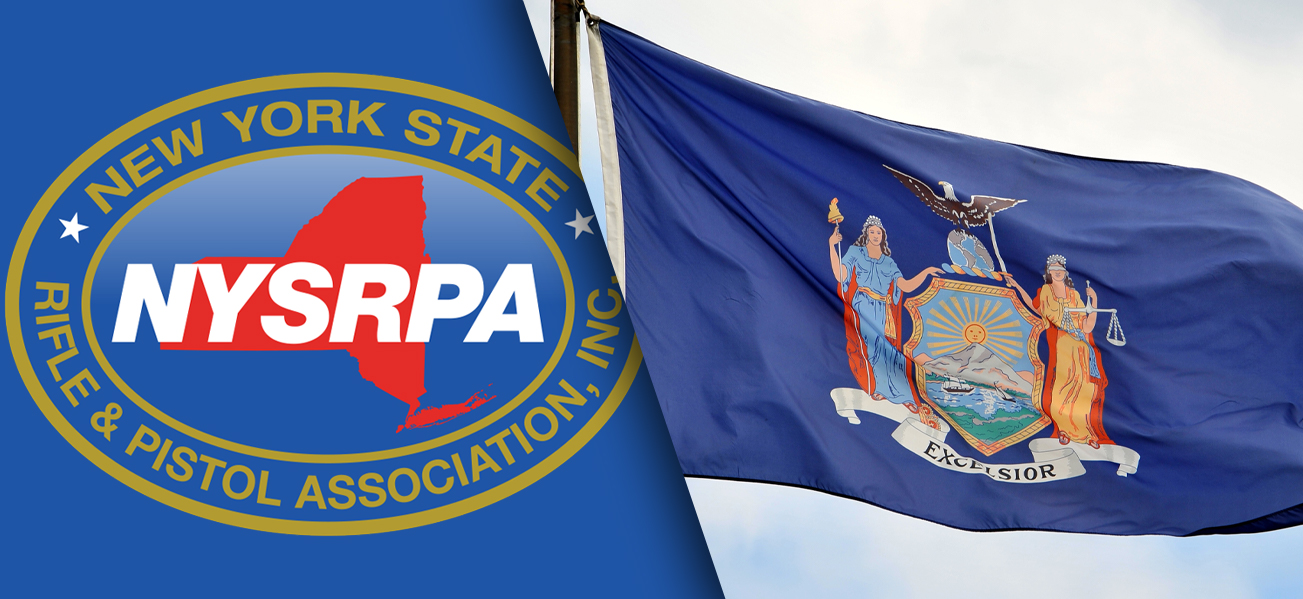NYSRPA v. Bruen SCOTUS
New York's Restrictive Handgun Law Positioned to be Struck Down by SCOTUS
Oral arguments were completed November 3 in New York State Rifle and Pistol Association v. Bruen, in what promises to be one of the Supreme Court's seminal rulings regarding the Second Amendment.
In nearly two hours of debate, most Justices seemed to be skeptical of New York's restrictive handgun law, which is good news for pro-gun advocates. However, there were occasional small hints that the Court could potentially hand down a narrowly tailored opinion regarding New York's law specifically, while leaving the issue of carrying handguns in public largely an open question for a future Court to decide.
How We Got Here
The State of New York currently requires anyone who wants to carry a handgun concealed in public to demonstrate “proper cause” to be granted a concealed carry permit. Being stalked, harassed, or receiving threats of violence, for example, could constitute “proper cause” under the present laws, but a general desire to carry a gun for self-defense is not. In addition to New York, the states New Jersey, Massachusetts, California, Maryland, and Hawaii have very similar laws, too.
When two New York men applied for a concealed handgun permit, they were both granted only a restricted permit to carry for target shooting and hunting, and one of them received an exemption to carry for work purposes as well. Teaming up with the New York State Rifle and Pistol Association, they sued the State of New York in federal court, challenging the “proper cause” restriction. New York State filed for dismissal which the district court granted, and that dismissal was subsequently upheld by the federal court of appeals.
The challengers then applied for review by the U.S. Supreme Court which, at Justice Brett Kavanaugh's urging, was granted earlier this year.
Oral Arguments
Supreme Court arguments are typically relatively brief. They are unlike the trials most people are familiar with, and often seem relatively informal in comparison. The petitioners and respondents stand before the Court and give their arguments, and the nine justices are free to interrupt and question them. All of the legal arguments and research is previously submitted to the Court and the justices are briefed ahead of time, so the hearing gives the justices the opportunity to converse with the interested parties and have their questions answered.
Paul Clement, the attorney for the petitioners, opened with the history of the Second Amendment, showing it has protected the right of individuals to keep and bear arms since its adoption and merely enshrined the natural right of self-defense inherent to all humans. Clement pointed out that this right does not require the permission of agents of the government, which is the entire purpose behind protecting it in the Constitution in the first place. Further, he highlighted the fact that the vast majority of American states allow citizens to exercise this fundamental right, thereby creating inconsistency and abuse in the free exercise of citizens' rights.
Justice Elena Kagan questioned Clement's interpretation of the situation in New York, asserting that the Court needed the statistics of how many permit applications were granted and denied, and for what reason, before the Court could arrive at a fair opinion. The other liberal justices agreed, suggesting the case needed more proceedings in a lower court to develop these facts.
Justice John Roberts inquired about the consequences of ruling in the petitioner's favor, like whether or not that would allow guns in places like courtrooms. Clement responded that such decisions would have to be made on a case-by-case basis; however, Justice Brett Kavanaugh reminded the Court that the question at hand was the constitutionality of New York's permitting process, and that it was not the Court's problem to solve the issue of where guns were specifically carried.
Clement pointed out to the Court that New York already has “sensitive places” restrictions but that they were not being challenged, merely the constitutionality of New York's permitting system. In a hopeful moment, Kavanaugh closed with the petitioners by suggesting that the constitutionality of New York's policy can be determined by the Second Amendment itself, without needing to resort to delving into what gun control schemes have been considered lawful in the past.
At that point, New York Solicitor General Barbara Underwood stood before the Court and began recounting the long history of gun control, going back centuries through English and American law, proposing to the Court that decisions regarding guns, such as permitting laws, have long been the purview of the states, arguing that system has worked well.3 Deputy Solicitor General of the United States Brian Fletcher spoke on behalf of the Biden Administration, agreeing with Underwood. He went on to attempt to justify New York's laws by citing other examples in other states through our history that are similar to New York's current permit laws.
Justice Roberts took Underwood to task over the uneven application of New York's permitting laws, which is used disproportionately to deny city dwellers their rights to carry a handgun for self-defense, while allowing it more in rural areas. Underwood began to use the public safety argument so favored by the anti-gunners, however Roberts interrupted her and humorously asked, “how many muggings take place in a forest?”
Justice Samuel Alito and the other conservative justices then questioned Underwood on the wide discretion local officials have in deciding what a “proper cause” is in granting or rejecting permit applications. Underwood acknowledged the discretion but insisted that it was guided by law. Alito was dubious however, and effectively said that there was no way for a citizen to be sure the decision to reject their permit application was fairly and justly made.
After just short of two hours, the oral arguments concluded.
What Now?
The Court's opinion is expected before next summer, so for now, we're all left waiting. There is much to be hopeful for however. There is a six-to-three conservative majority on the Court right now, and it was a conscious, deliberate decision on their part to hear a new Second Amendment case—something the Supreme Court has historically avoided. The chief proponent of this was Brett Kavanaugh, who seems to be against New York's permitting system and on the side of the petitioners.
In general, the conservative majority seemed supportive of the petitioners as well. In comparison, the arguments in favor of the permit system made by the State of New York and the Biden Administration seemed weak, relying heavily on issues easily seen as irrelevant. The three-person liberal minority on the Court seemed mostly interested in dismissing the case back to a lower court just so they didn't have to deal with it.
Assuming the Court sides with the petitioners and strikes down the New York carry permit system, it will be interesting to see just how narrowly tailored the Court's opinion will be. The open question at the moment is how the ruling will affect the other states with similar laws. Regardless of the outcome though, this is an historic case that bears watching.












